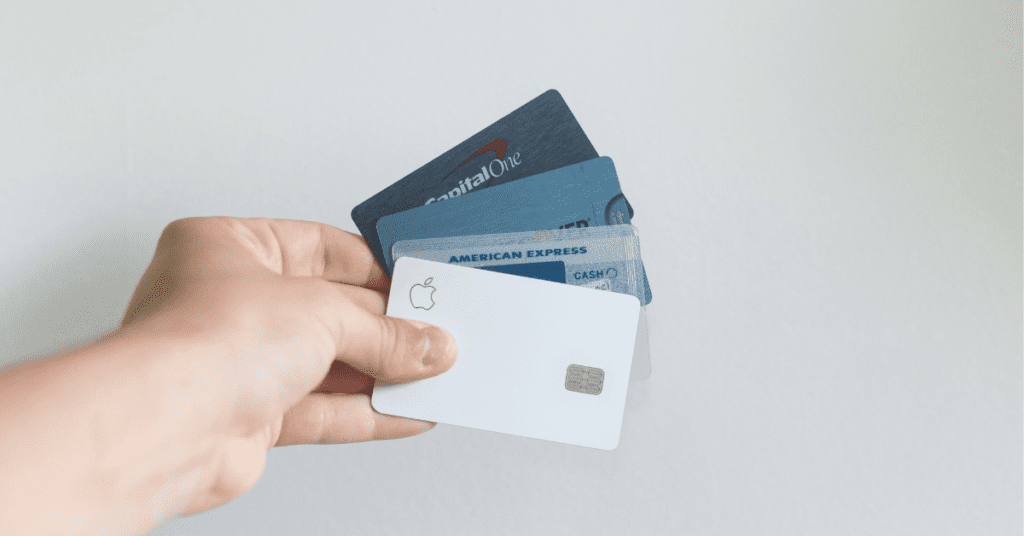

Debt Management: How to Pay Off Debt and Build Wealth Simultaneously
Paying off debt while building wealth may seem impossible, but with smart debt management, you can achieve both. Start by creating a realistic budget to track spending and free up extra cash for debt repayment.
Prioritize high-interest debt using the avalanche method to minimize interest or the snowball method for quick wins. Reduce unnecessary expenses and redirect savings toward wealth-building investments.
Building an emergency fund prevents relying on credit cards for unexpected expenses. Automate payments to stay consistent with debt reduction and savings goals. Consider debt consolidation for lower interest rates.
Increase income streams through freelancing, side hustles, or passive income. Invest in retirement accounts, stocks, or real estate to grow wealth. The key is discipline and financial literacy to sustain long-term financial freedom.
With strategic financial planning, you can eliminate debt, grow assets, and secure your future. Start today to achieve debt-free wealth-building success!
Debt can be a significant barrier to wealth building, but with the right strategy, you can manage and eliminate debt while still building financial stability. The balance between paying off debt and growing wealth requires discipline, focus, and a practical approach to personal finance.
This article covers essential strategies for effective debt management while creating a foundation for financial freedom.


Understanding Debt and Its Impact on Financial Health
Debt plays a crucial role in personal finance, influencing both credit scores and overall financial stability. While some debt, like mortgages and student loans, can be considered good, high-interest credit card debt and payday loans can lead to financial stress.
Excessive debt reduces disposable income, making it harder to save and invest. High debt-to-income ratios can limit borrowing power and affect loan approvals. Understanding interest rates, repayment terms, and financial obligations is essential for maintaining a healthy financial future.
Effective debt management strategies include prioritizing debt repayment, consolidating loans for lower interest, and building an emergency fund. By reducing debt and adopting responsible money management habits, you can improve financial health and achieve long-term wealth-building success.
Debt, while sometimes necessary, often leads to interest costs that eat into your finances, limiting your ability to save and invest. Knowing the types of debt and their impact on your finances is key to developing a solid debt management plan. Debt generally falls into two categories:
- Good Debt: Debt that can potentially increase your wealth, like mortgages, student loans, or business loans. Good debt often has lower interest rates and the potential to lead to income growth or asset accumulation.
- Bad Debt: High-interest debt like credit card balances and personal loans, which generally have little long-term value and can quickly become unmanageable.
To achieve financial freedom, it’s essential to control or eliminate “high-interest debt” first, as it can significantly reduce your financial capacity for future wealth-building activities.


Step 1: Assess and Prioritize Your Debts
The first step to managing debt is understanding what you owe. Create a list of all outstanding debts, noting balances, interest rates, and minimum payments. By prioritizing your debts, you can form an efficient strategy to eliminate them based on urgency and cost.
Debt Prioritization Methods
- The Debt Snowball Method: Focus on paying off your smallest debt first while making minimum payments on larger debts. Once the smallest is paid off, roll over that payment to the next smallest debt, creating a “snowball” effect.
- The Debt Avalanche Method: Prioritize debts with the highest interest rates first to minimize interest costs. This method is often more cost-effective in the long term, but it can be harder to stay motivated with larger debts.
Actionable Tips
- Make a spreadsheet or use an app to track debts, payments, and progress.
- Reevaluate debts regularly to stay on top of “interest rate changes” or new payment strategies.
- Consider consolidating multiple high-interest debts to simplify payments and potentially reduce interest.
Step 2: Create a Debt Repayment Plan with Budget Adjustments
Once you know where you stand, it’s time to build a debt repayment plan that aligns with your budget. By making small adjustments to your expenses, you can allocate more toward debt without sacrificing other financial goals.
Budgeting for Debt Repayment
- 50/30/20 Rule Adaptation: Allocate 50% of income to necessities, 30% to debt repayment and financial goals, and 20% to personal expenses.
- Zero-Based Budgeting: Ensure every dollar has a purpose by creating a budget where income minus expenses equals zero. This method allocates specific amounts to debt repayment each month.
Actionable Tips
- Review your budget and reduce unnecessary expenses to free up funds for debt repayment.
- Automate debt payments to avoid late fees and reduce the risk of missed payments.
- Consider taking on side jobs or freelance work to boost income dedicated to debt payments.
Step 3: Focus on Reducing High-Interest Debt First
Interest costs can quickly add up, making high-interest debt particularly burdensome. Paying down high-interest debt faster can reduce the amount you owe over time, freeing up money for other financial goals.
Why High-Interest Debt is Priority
- Compound Interest: Interest charges accrue based on the outstanding balance, increasing the total debt.
- Reduced Financial Flexibility: High-interest payments can restrict your cash flow, limiting your ability to save or invest.
Actionable Tips
- Set a goal to pay off at least one high-interest debt in the next six months to reduce the financial burden.
- Avoid adding to “high-interest debt”, especially on credit cards or personal loans.
- If possible, transfer high-interest debt to a “low-interest credit card” or loan.
Step 4: Avoid Accumulating New Debt
Eliminating debt becomes harder if new debt is continuously added. Establishing financial habits that prevent additional debt can help you stay focused on building wealth.
Practical Ways to Avoid New Debt
- Stick to a Budget: Avoid overspending by staying within your monthly budget.
- Use Cash or Debit for Purchases: Using cash or debit cards instead of credit helps avoid interest charges and the risk of overspending.
- Avoid Lifestyle Inflation: As your income grows, resist the temptation to increase spending. Allocate income increases to debt repayment and savings instead.
Actionable Tips
- Limit the use of “credit cards” to essential purchases and pay off the balance each month.
- Avoid impulse purchases by planning and sticking to a shopping list.
- Set a personal rule to save up for large purchases rather than relying on credit.
Step 5: Build an Emergency Fund to Avoid Debt Relapses
Unexpected expenses can derail your debt repayment progress, pushing you back into debt if you’re not prepared. A small emergency fund of three to six months’ expenses can provide a safety net.
Why an Emergency Fund is Essential
- Prevents New Debt: With funds set aside for unexpected expenses, you won’t need to rely on credit cards or loans.
- Reduces Financial Stress: Knowing you have an emergency fund provides peace of mind, allowing you to focus on paying down debt.
Actionable Tips
- Start with a small “emergency fund” goal, such as $1,000, and build from there.
- Keep your emergency fund in a separate savings account to reduce the temptation to spend it.
- Automate contributions to your emergency fund each month, even if it’s a small amount.


Step 6: Invest While Managing Debt
Contrary to popular belief, it’s possible to build wealth while repaying debt. By allocating a portion of your income to investments, you can grow wealth gradually even as you pay down debt. Investing allows you to take advantage of “compound interest” over time, potentially accelerating your financial goals.
Investment Strategies While in Debt
- Employer-Sponsored Retirement Accounts: If your employer offers a retirement plan with matching contributions, contribute at least enough to get the match. This is “free money” that helps your money grow faster.
- Low-Risk Investments: Consider low-risk options like high-yield savings accounts, certificates of deposit (CDs), or bonds that offer safe returns without compromising debt repayment.
- Roth IRA: If you qualify, contributing to a Roth IRA offers tax-free growth potential, allowing your savings to accumulate while you’re paying off debt.
Actionable Tips
- Allocate 5-10% of your income toward investments, balancing debt payments and growth opportunities.
- Start with safe investments that won’t jeopardize your debt repayment goals.
- Use a “robo-advisor” or investment app to simplify the investment process if you’re new to it.
Step 7: Use Debt Repayment Tools and Resources
Many tools and resources are available to help you pay down debt faster and more effectively. By leveraging debt calculators, apps, and financial advisors, you can manage your repayment journey with greater efficiency.
Debt Management Tools
- Debt Repayment Calculators: Online calculators can help you understand how different payment strategies affect your payoff timeline and interest costs.
- Debt Management Apps: Apps like “Undebt.it”, “Tally”, and “Credit Karma” can simplify debt tracking and repayment planning.
- Financial Advisors: Working with a certified financial planner (CFP) or debt counselor can provide personalized strategies and accountability.
Actionable Tips
- Use a debt repayment calculator to test different repayment methods and see which is most effective for your situation.
- Download a “debt management app” to stay organized and motivated.
- Consider consulting a debt counselor if you’re struggling to make progress on your own.
Step 8: Celebrate Small Wins to Stay Motivated
Staying motivated during the debt repayment process is crucial. It can be easy to lose momentum, especially with large debts. By celebrating milestones, you’ll be more likely to stay on track and committed.
Examples of Small Wins
- Debt Payoff Milestones: Celebrate when you pay off a specific debt or reach a percentage reduction in total debt.
- Savings Milestones: Recognize progress in building your emergency fund or reaching an investment goal.
- Budget Successes: Take pride in sticking to your budget for consecutive months.
Actionable Tips
- Set small reward systems, like treating yourself to a favorite activity or meal, after achieving a milestone.
- Share your progress with a trusted friend or family member for added accountability and support.
- Keep a journal of your “debt-free journey” to remind yourself of the progress you’re making.
Step 9: Reevaluate Your Debt Repayment Plan Periodically
Life circumstances change, and so should your debt repayment plan. Regularly reevaluating your finances ensures that your debt elimination strategy remains effective and aligned with your goals.
When to Reevaluate
- Income Changes: Adjust your plan when you get a raise, bonus, or other income increase.
- Major Expenses: Update your budget and repayment plan if you incur significant expenses or take on new debt.
- Debt Reduction: As you reduce or eliminate debts, redirect payments to other financial goals.
Actionable Tips
- Review your debt repayment plan quarterly to stay proactive about financial changes.
- Increase debt payments whenever possible to accelerate your progress.
- Seek professional advice if you encounter unexpected setbacks.
Conclusion
Effective debt management is the foundation of long-term financial independence. By implementing the right strategies, you can eliminate financial stress, reduce debt faster, and build lasting wealth. The key lies in discipline, consistency, and a personalized approach that fits your financial situation.
Remember, true financial freedom isn’t just about paying off debt—it’s about creating a stable and prosperous future where your money works for you. Start today, stay committed, and take control of your financial destiny.


Hasnain Aslam is a seasoned finance blogger and digital marketing strategist with a strong expertise in SEO, content marketing, and business growth strategies. With years of experience helping entrepreneurs and businesses boost their online presence and maximize organic traffic, he specializes in crafting high-impact content that ranks on search engines and drives real results. His insights empower professionals to build sustainable digital success through strategic marketing and innovative SEO techniques.


